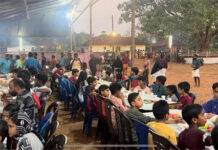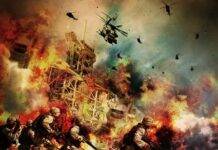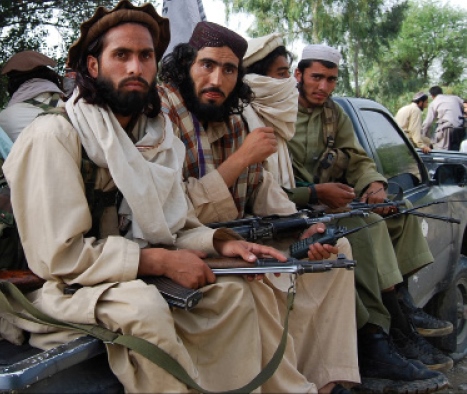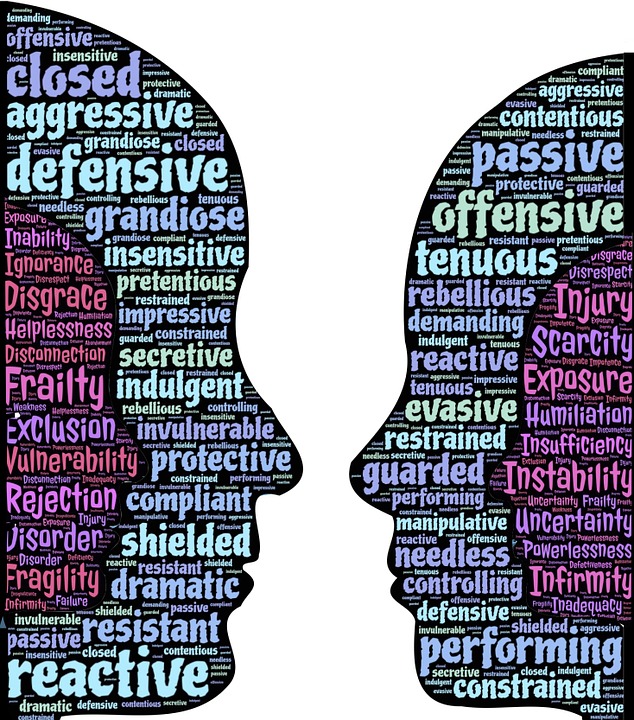
This long article will appear in two parts for a reader-friendly experience.
Part 1
In some rural areas of Rajasthan there is a saying, a rough Hindi rendering of which is: “zabra maare bhii aur rone bhi naa de.” (The one who is powerful beats you and does not even allow to cry out in pain.) This rustic saying poignantly captures the brutality of raw power. When the powerful hurts you, and there is no remedy to counter or stop him, the only recourse you have is to make the pain and humiliation bearable by crying, wailing, weeping. But the brutality of power comes into final play when it does not allow you even to cry, wail, weep your pain out. The pain then simmers inside you and gives rise to psychological scares which, those who have not gone through this experience cannot even begin to understand. The outsider focuses on the physical hurt of beating; the mental torture and humiliation is considered secondary and of lesser consequence. Such outsider investigators or analysts of the beating received by the weak become knowing (often) or unknowing accomplices of the perpetrator of an atrocity. This analysis becomes the second psychological ‘beating’, and in case the one who has been beaten does not even have the intellectual and epistemic resources to counter this psychological beating, the original atrocity plays out all over again for him, this time at the level of the mind and emotions. This is amply reflected by another saying in the aforementioned rustic area: “tan ka ghaav to bhar jaaye, man ka naa bhare”. (A wound on the body heals, but the one inflicted on the mind/heart does not.)
This, in a nutshell, is how a section of Hindu population(1)feels about their temple destruction. The section of Hindu population who feel this way was always there, but too minuscule in size, this section is now growing with leaps and bounds. The Muslim invaders came and destroyed temples in thousands. The Hindus were powerless, and therefore, could not stop this bigoted barbarity. Back then they might have wailed in pain, but the political power which perpetrated this atrocity would perhaps have enjoyed rather than addressed this pain. So, the tears dried up. The wound went deep into the heart and stayed there. After Independence, a theory of historiography was adopted which used a rich repertoire of strategies to blame all ills on Hindus and whitewashed the crimes of Muslim kings relentlessly. The old wound, not yet healed, was deepened by this blatant intellectual atrocity. The reins of education, political power and media narrative were all in the hands of people who believed that recognition of Muslim kings’ atrocities will create animosity between the two most populous religious communities in India, the Hindus and Muslims. A much more painful wound was inflicted in the form of Partition, this time, not by Muslim kings but the common Muslim population. This was raw, and the political and intellectual leaders thought that official recognition of past atrocities will make this wound fester for all times. Thus, whitewashing of history and obfuscation of the real cause of partition became a necessity in their project of building a unified nation, characterized by ‘unity in diversity’. They, perhaps, acted in good faith, but their strategy was wrong. They should have been wiser, and known that unity or harmony built on falsehood is like building a massive fort without foundation on a sand-dune. A simple gust of wind may expose its foundations and make it crumble.
According to the afore mentioned section of Hindu population this is precisely what happened. Irked by continuous vilification of Hindu-dharma and denial of historical atrocities, some Hindus refused to submit to the strictly controlled intellectual and academic order that the politically, economically and intellectually powerful elite had created in the form of control on education and the media. They started digging historical evidence and challenging the whitewash project on the basis of documented history. Any false narrative requires selective use of evidence and specious theories of interpretation. The theories are artifacts made of ideas, and they can grow into a yarn of interpretation to a large extent but still, they necessarily do require some credible facts at pivotal points. The historians built several such strategies to bolster the whitewash project.
And then the Information Technology (IT) hit them between the eyes. The whitewash narrative was sustained on an academic technique and some well-conceived strategies. To understand the academic technique, let us suppose that you read an historian Z claiming that Aurangzeb was a great respecter of Hindu temples, and he protected more temples than he destroyed. The historian Z will give reference, in true academic tradition, of the source as the writings of Y. The historian Y in turn will give a reference to X, and so on. Now imagine a common person with reasonable intellect and independent thinking. This person would like to make up her own mind rather than going by the authority of Z. She will look for the writings of Y, then of X, and so on. But this commonsense person is not part of the elite club to which the libraries and archival material is readily available, and also has other cares in life. Therefore, at some stage she will get tired and stop somewhere in the chain. The narrative created by Z will thus stand even if it creates unease in some inquisitive and independent minds. That is where the IT bomb exploded.
These westerners, with substantial help from Indians as well, put a lot of archival material and books, pirated and/or legal, on the internet. Most of this growing corpus became freely available. Some became available for buying at reasonable price. Now our inquisitive commoner with an independent mind could trace the references all the way from Z to A and decide for herself. Of course, it is painstaking, tedious and time consuming. But it can be done. May be for one or two missing links one has to request a friend to whom the costly archives are available. These common people started digging for references and found that many of these move in circles without ever reaching primary credible sources. This dented the narrative but did not cause it to collapse. Some of this turned out to be cherry picking: the historian under investigation might have taken what supported his narrative and left out what went against it, in the same source, nay, often on the same page of the same source! This seriously discredited the narrative. As said above, specious theories used as strategies can support the narrative only if they also have some anchor or pivot in terms of deemed facts supported by a primary source. If you hit at these pivotal points, then it is like a bull’s eye. It hurts. Now suppose a narrative stands on hundred such pivots. One does not need to dismantle all those hundred pivots – may be a dozen carefully chosen ones will cause it to collapse. This is precisely what happened to the whitewash narrative, and now it has collapsed.
Let me use another rustic saying here: “samundar sookhata hai to bhii keechad to bachataa hii hai”. (Even when an ocean dries up, it leaves behind sludge.) As mentioned above, a narrative requires theories as well. A thick obfuscating hangover of the theories remains as ‘sludge’ even when the pivots of facts are seriously damaged. And the whitewashers keep on using it, if not to convince, at the very least to obfuscate and confuse their opponents and the masses. At present, we are at this stage in our public discourse. Therefore, let us have a critical look at some of the prominent strategies used in this false narrative.
The strategies
The most prominent strategies used in the current discourse for denial of atrocities by Muslim rulers can be listed as follows:
S1: Selective use of Persian and Arabic sources
S2: Attributing destruction of temples primarily to political motives
S3: Claiming protection or support for temples by Muslim rulers
S4: Claiming destruction of places of worship as a non-Islamic tradition in Indian history
S1: Selective use and interpretation of Persian and Arabic sources
This is a very potent strategy. To understand it fully, we need to first ascertain the character of the primary Persian and Arabic sources in terms of their language and feelings expressed. Therefore, I will start with a long quote from ‘Maasir-i-Alamgiri: A History of the Emperor Aurangzeb Alamgir’ authored by Saqi Mustad Khan (https://www.indianculture.gov.in/ebooks/maasir-i-alamgiri-history-emperor-aurangzib-alamgir-reign-1658-1707-ad ). (2)
Be patient in reading and pay attention to the emphases added by me:
“During this month of Ramzan abounding in miracles, the Emperor as the promoter of justice and overthrower of mischief, as a knower of truth and destroyer of oppression, as the zephyr of the garden of victory and the reviver of the faith of the Prophet, issued orders for the demolition of the temple situated in Mathura, famous as the Dehra of Kesho Rai. In a short time by the great exertions of his officers, the destruction of this strong foundation of infidelity was accomplished, and in its site a lofty mosque was built at the expenditure of a large sum. This temple of folly was built by that gross idiot Birsingh Deo Bundela. Before his accession to the throne, the Emperor Jahangir was displeased with Shaikh Abul Fazl. This infidel became a royal favorite by slaying him, and after Jahangir’s accession was rewarded for this service with the permission to build the temple, which he did at an expense of thirty-three lakhs of rupees.
Praised be the august God of the faith of Islam, that in the auspicious reign of this destroyer of infidelity and turbulence, such a wonderful and seemingly impossible work was successfully accomplished. On seeing this instance of the strength of the Emperor’s faith and the grandeur of his devotion to God, the proud Rajas were stifled, and in amazement they stood like images facing the wall. The idols, large and small, set with costly jewels, which had been set up in the temple, were brought to Agra, and buried under the steps of the mosque of the Begam Sahib, in order to be continually trodden upon. The name of Mathura was changed. to Islamabad.”(3)
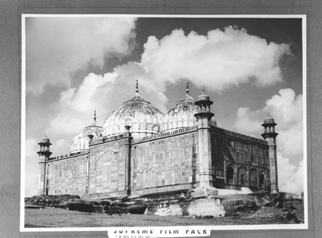
This narration gives us the fact of the matter that the Mathura temple was destroyed by the orders of Aurangzeb, a mosque was erected in its place, the idols were buried under steps of a mosque, etc. But it also expresses feelings of disdain for temples (‘temple of folly’), Hindu faith (‘infidelity’), desire to eradicate the Hindu faith and to insult it. Also, pride in Islam and the emperor as the destroyer of infidelity and reviver of the Islamic faith.
What our historians do with such narrations is (i) usually, but not always, accept the fact of destruction, but (ii) discount the bigotry and call it formulaic or exaggeration. We will return to it after quoting one more passage.
There is a Shiva temple near Sikar in Rajasthan, locally known as Harshnath Temple, according to local belief this quote also relates to its destruction along with several other temples.
“Darab Khan who had been sent with a strong force to punish the Rajputs of Khandela and to demolish the great temple of the place, attacked the place on the 8th March / 5th Safar, and slew the three hundred and odd men who had made a bold defence, not one of them escaping alive. The temples of Khandela and Sanula and all other temples in the neighborhood were demolished.” (ibid, page 107)
In this kind of narration, our historians will say that (iii) “all other temples in the neighborhood were demolished” is an exaggeration. Thus, the Persian and Arabic sources are used selectively, and their bigotry, religious zeal and the number of temples destroyed are called exaggeration to soften the impact. But this strategy raises a few questions, answers to which I have not come across (I may be ignorant of them and will consider them when known to me). The primary questions are: (i) Why did the court or contemporary historian bring in the religious motive so prominently, if it was not there? (ii) Why did he bring in hatred for Hindus and Hindu-dharma? And (iii) why did he exaggerate the numbers? We will leave these questions for the moment and will consider them with the second strategy.
S2: Attributing destruction of temples to political motives and exorcising the act of religious bigotry
Most of our prominent historians argue that ‘there might have been some religious angle’ but the primary reasons for the destruction of temples were loot (in the case of Ghazni) and punishing political opponents or rebels. Richard Eaton writes in detail on this, and most others seem to echo him. His contention is that temple destruction was mostly on the frontiers of Muslim conquests, and some in the interior after power was established. The interior is supposed to be motivated to punish the opponents or rebels. Eaton gives a theory that the legitimacy of the Hindu kings was associated with the deity of their kingdom. The real source of power was supposed to be the deity and the king was only a representative of the deity, and had the deity’s protection and ‘ashirvad’. The destruction of the temple of the deity was a symbolic act to communicate that your deity is not capable of protecting you or has abandoned you and not willing to protect. The theory sounds plausible, and may have some grain of truth in it. But this theory makes it even harder to answer the three questions listed above – that is, why bring in the religious motive on the part of the Muslim kings, hatred for Hindus and exaggeration?
Let us now try to imagine some logical answers to these questions. One possibility is that the historians writing in Persian and Arabic were themselves religious bigots and brought in these elements to satisfy their own fantasies. But many of them were courtiers and Islamic scholars with huge influence on policies and governance. This will imply that the rule of the Muslim kings was guided by unjust and bigoted courtiers and scholars, and thereby reflect badly on the character of Islam rule. Therefore, our historians are unwilling to admit this. The second possibility is that the rulers themselves were bigoted and were also motivated by religious sentiments. This will reflect badly on the kings, and we will therefore not be able to prove them to be just rulers. The third possibility that it was done to please the Islamic ummah in the Middle East and the Khalifas of the time. In such a case, the charter of Islam will be proved to be very intolerant, and so, this possibility too cannot be accepted in most cases; though in the case of Mahmud Ghazani this is accepted. The fourth possibility is that it was to please other courtiers in high and powerful positions in the court. But this again will be proof that the rule was unjust and in the hands of religious zealots. The final possibility could be that it was to please the Muslim population. But this would be the worst of all, for this would mean that the common Muslim of those times was a religiously motivated Hindu-hater. This one obviously is the worst. Therefore, none of these possibilities seem to be acceptable to our historians in their whitewash project. But one of these possibilities must be true, otherwise the religious hatred expressed in these narrations remains unexplained. Perhaps, the truth is a complex mixture of all these possible motives.
But let us, for the sake of argument, accept that temple destruction was for the political reasons, and not motivated by religious feelings. Does it in any way make it better and less painful for the victims? This would mean that one subject’s religion is being degraded and attacked for his political activities while another is punished only politically, without involving religion. Does this make the king any less cruel and bigoted? To my mind it does not. Thus, the hatred for Hindus, intolerance for Hindu-dharma and disrespect for temples cannot be wished away. The reports may be exaggerated but the sentiment and core facts remain. This strategy can work only for the gullible.
S3: Claiming protection or support for temples by Muslim rulers
Recently one so-called historian of Aurangzeb claimed that he protected more temples than destroyed. There are also claims that Tipu Sultan and other Muslim rulers supported Hindu temples. It might be true; I think it is true. But one must see the extent of this support – the question is, how many? One also has to compare this number with the numbers involved in the destruction of temples. This strategy cannot be used to prove the goodwill – or even tolerance – of the rulers in question towards Hindus because if political motives are used to exorcise the act of destruction based on bigotry, then the claim of benevolence also goes out of the window. But the bigger problem with this strategy is that the list of temples supported or protected is either not provided, and only unsubstantiated claims are made, or the list falls too short in comparison with the list of temples’ destruction. The issue with protection to temple also begs the question: protected from whom? Their own Muslim officials? Can a king claim credit for protecting his subjects’ honour and places of worship from his own officials and courtiers?
Footnotes
1.In this article wherever I say “Hindus” I mean a section of Hindu population which feels this way. I am aware all Hindus do not feel like this and do not have this opinion.
2. Maasir-I-Alamgiri of Saqi Mustad Khan, translated by Sir Jadu Nath Sarkar, published by Royal Asiatic Society of Bengal, 1947, page 60.
Rohit Dhankar is Professor, School of Education, Azim Premji University, Bangalore. He is also the Secretary, Digantar, Jaipur.
The views and opinions articulated here are solely that of the author and are not endorsed by the The New Leam.

